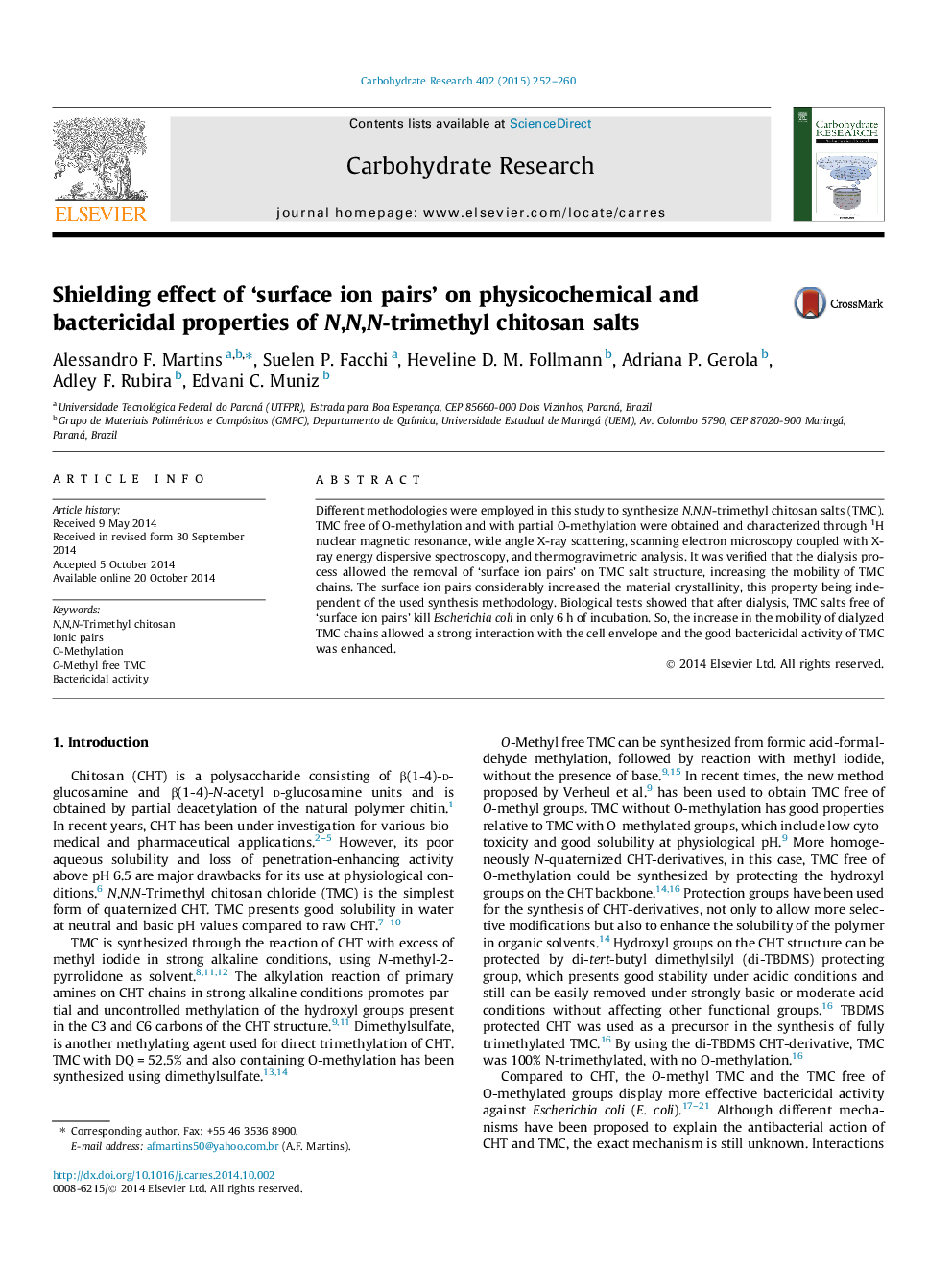| Article ID | Journal | Published Year | Pages | File Type |
|---|---|---|---|---|
| 1387786 | Carbohydrate Research | 2015 | 9 Pages |
•N,N,N-Trimethyl chitosan (TMC) free of O-methylation and with partial O-methylation were obtained.•The dialysis process allowed the removal of ‘surface ion pairs’ on the TMC salt structure, increasing the mobility of TMC chains.•After dialysis, TMC salts free of ‘surface ion pairs’ with amorphous character kill E. coli in only 6 h of incubation.
Different methodologies were employed in this study to synthesize N,N,N-trimethyl chitosan salts (TMC). TMC free of O-methylation and with partial O-methylation were obtained and characterized through 1H nuclear magnetic resonance, wide angle X-ray scattering, scanning electron microscopy coupled with X-ray energy dispersive spectroscopy, and thermogravimetric analysis. It was verified that the dialysis process allowed the removal of ‘surface ion pairs’ on TMC salt structure, increasing the mobility of TMC chains. The surface ion pairs considerably increased the material crystallinity, this property being independent of the used synthesis methodology. Biological tests showed that after dialysis, TMC salts free of ‘surface ion pairs’ kill Escherichia coli in only 6 h of incubation. So, the increase in the mobility of dialyzed TMC chains allowed a strong interaction with the cell envelope and the good bactericidal activity of TMC was enhanced.
Graphical abstractN,N,N-trimethyl chitosan salt containing surface ion pairs (before dialysis) and N,N,N-trimethyl chitosan salt without surface ion pairs (after dialysis).Figure optionsDownload full-size imageDownload as PowerPoint slide
